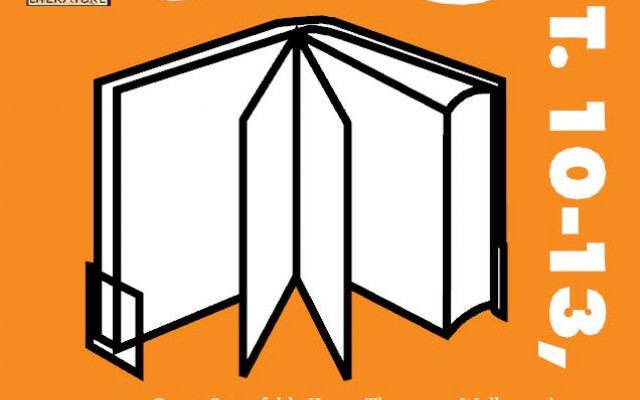Five Roman Islands
The vignettes below, or "islands", come from the forthcoming book Islands—New Islands (Fontanella Press, 2019), translated by Hope Campbell Gustafson, where they appear alongside archival photos from the American Academy in Rome. Written in Italian by Marco Lodoli, they were first published serially in the newspaper La Repubblica, then collected in Isole and Nuove Isole (Einaudi, 2010 and 2014) with the subtitle “A Vagabond Guide to Rome.” Lodoli’s aim is “to point out islands of beauty and poetry in Rome: a piazza, a tree, a painting, a bar on the periphery, a side street.” Written by a Roman for Romans, these islands urge all readers to see their surroundings with new eyes. The archipelago presented here describes the late-night relationship Romans have with their pastries, a very special fig tree, a trompe l’oeil tourist destination, and Beatrice, a Renaissance-era feminist.
1.
Every so often I try to locate islands in the great sea of this city: they could be paintings or trees, books or shadowy corners, statues or drinking fountains. They could be places that are almost hidden so they don’t vanish, like those beautiful cats we discover, curled up under the fender of a parked car, studying us with muscles tensed and eyes full of apprehension because they've seen many friends get run over. If we approach them abruptly in hopes of petting them, they recoil and disappear. Deep down, the value of things resides primarily in our way of observing them: any cat could be as rare and precious as a Bengal tiger, and even the most banal-seeming place could be worth a photograph and a frame, just as an Aztec temple or a distant beach.
I was thinking about all this while sitting in my car on the little hill of Via Olina, in the Torre Maura neighborhood. I had an hour-long break and nothing to do other than try to understand what I was looking at: a deserted lot and houses constructed without standards, exposed bricks and satellite dishes balancing on the roofs. On the second floor a Chinese woman was carefully cleaning her windows, while the washing machine on the balcony spun colorful clothes. In a small cement courtyard little children were playing: white, black, yellow, they ran after one another and spun around happily like the clothes. Then three young Nigerian women walked by, eyes lowered. In plastic bags they carried the revealing clothing they'd be wearing later, along highways where they went to prostitute themselves. On the wall was written: "All never forget this year with you," exactly like that, with the capital A. Then a sky-blue Fiat slid by in front of me, a wreck, driven slowly by a gypsy man hysterically laughing: balanced on the hood was a big mangy cat, it looked like the emblem of that car, of that life. And meanwhile the little Chinese woman continued washing her windows, making them even more transparent. It seemed as if she wanted to tell me: you should do this too, clean your gaze.
2.
I never feel further away from Rome than when, at some unfamiliar bar in the morning, I ask for a cornetto along with my caffè and get a confused look from the other side of the counter. "You'd like a pastry?" the waiter asks, "a croissant?" To which I'd like to reply: "No, trust me, I want a cornetto—still warm, nothing inside, no jam or cream. I want that small dose of happiness that enables everyone in Rome to start the day more calmly, ready to face its uphill struggle." But I avoid making a fuss and accept the "pastry," my heart heavy with nostalgia.
If a cornetto is a necessity in the morning, late at night it becomes a source of pure pleasure. After the cinema and long conversations with friends, after having been awake so long that you can count the hours remaining for sleep on one hand, you'll want to end the night on a high note, to erase every sense of duty and guilt with a single freeing, sweet, and spontaneous gesture. And so you throw out one last proposal to your late night pals: "What do you say, let's have a nice warm cornetto?" It's rare for anyone to refuse. It's almost impossible to resist the temptation. An 8:10 am flight from Fiumicino, a decisive meeting, the most important appointment of your life could be the very next day, but it doesn't matter: you're already off in search of the greatest good.
Everyone has their favorite spot—a bakery on a street outside of the center, a little bar on the other end of town. For some time, the ultimate spot was Er Montacarichi, "the freight elevator," in Pietralata, where you'd have to climb to the fourth floor like some secret society member. But tonight you're headed straight for Bar Romoli on Viale Eritrea or Cornetto Notte on Viale Palmiro Togliatti. You take the first bite and can't stop—all your good intentions to diet and lead a healthy life are forgotten. Leaning on the hood of a car, with a cornetto in your mouth, you mumble the last truths of the night. Final, incomprehensible words fall in crumbles from your mouth.
3.
"In 1823 I had the pleasure of visiting Italy, and I was captivated by the portrait of Beatrice Cenci, which is to be seen in Rome, at the Palazzo Barberini." This is what Stendhal wrote in one of his more exciting Roman Tales, dedicated to the tragedy of the Cenci family. Francesco Cenci "paid no heed to the rest of mankind except by shewing his superiority to them, making use of them in carrying out his plans, or hating them." He was a brute who enjoyed "defying heaven" and tormenting his children. He died in his sleep, a nail hammered into one eye by two hit-men his daughter Beatrice and wife Lucrezia had hired. At first, Beatrice and Lucrezia's plan worked—the horrible man's body tumbled out the window, his head smashed, the crime covered up. Then the whispering began, and, little by little, suspicions gave way to certainty. Thus, Pope Clemente VII, after hesitating at length—uncertain whether to forgive (as requested by the people), or rather prove himself uncompromising (as some cardinals suggested)—ultimately signed the death sentences of the two women, as well as Beatrice's brother, Giacomo. He was clubbed to death and then torn to pieces with sharp pincers. The two women were brought to Piazza di Ponte Sant'Angelo, where the executioner's block had been set up. All of Rome was there to watch and cry when the blade chopped off Beatrice's marvelous little head. The story of the Cenci family has been taken up by Shelley, Guerrazzi, Dumas, and even Artaud, but the purest homage continues to be that portrait of Beatrice, which can still be seen at Palazzo Barberini. There is no guarantee that it is truly her, nor that the painter is Guido Reni, but we hope that it is. We also hope that the painting will be moved from the corner, a spot better suited to a fire extinguisher, and given a more worthy wall placement. "The face has sweetness and beauty," Stendhal writes, “the expression is most appealing and the eyes very large: they have the startled air of a person who has just been caught in the act of shedding large tears." Beatrice looks back over her shoulder and says goodbye with the gaze of someone who no longer knows what to do with her beauty. I'll leave it for you, she seems to say, because I am going to my death.
4.
The fig is the tree of abundance, the tree of summertime, sensual, golden. Under its supple branches they say Romulus and Remus were born and, on the other side of the world, Vishnu. Its leaves were read by augurs because they revealed the future. Its fruits have given us unparalleled pleasure. The Romans dedicated a little piazza to this tree—capable of growing in a crack, between four rocks, in an impossible corner. And our fig tree is still there, the signore of a place that was the epicenter of nightlife for many years until it faded melancholically.
Between Bar della Pace and Bar del Fico, fifty meters from each other, swarmed the most beautiful people of Rome—the night owls, the artists and filmmakers, the children of the night. Piazza del Fico welcomed the more alternative set—musicians and dreamers, chatterboxes and poetic deadbeats. Then Bar del Fico closed because the decrepit palazzo where it was housed became enveloped in an endless construction site. And so the piazza was again deserted; you pass through but you don’t stop. Many stores closed, life went elsewhere.
But the tree continues to protect that space, stuck like a vacuum in the tumult. Only the chess players come back to play under its naked branches, in front of the closed shutters. Around eleven in the morning the Kasparov and Fischer devotees set up their chessboards, arrange the white and black pieces, and begin the match. A small group of enthusiasts follows along, someone suggests a castling, a defense, an attack, and even the fig tree seems to be supervising from above, leaning over to protect the game.
Noise, laughter, and toasts have been replaced by silence, concentration, and intelligence at work. The fig tree sees time passing, life transforming; it follows the winter of chess and awaits the summer of love.
5.
“Amaze us!” say the eyes of the same friend who’s come to Rome for a couple days. So we load him in the car and whisk him here and there: the places to see are endless, the beauty is everywhere—among the columns of the Forum and the alleyways of Trastevere, in the Renaissance piazzas and the museums swollen with masterpieces. But the passing tourist doesn’t have the composure necessary to absorb so much beauty. It’s like a thirsty person who, from too much excitement, pours water all over his face and clothes. What he wants is to take away a few refreshing gulps, something surprising to tell whoever is waiting for him at home. He likes the keyhole on the Aventine hill framing Saint Peter’s dome better than he likes the dome itself seen up close.
So, if you really want to give your friend a jolt, bring him to the Church of Sant’Ignazio di Loyola. Even just the Rococo piazza is rather interesting, sketched out by the architect Raguzzini like a small theater—but for our friend it’s not enough, he’d passed carelessly through too many piazzas. So let’s push him inside the church, designed by the Jesuit mathematician Orazio Grassi, with the vault frescoed by another Jesuit, Father Pozzo. Let’s stop him, as though by accident, in the center of the nave, and invite him to lift his eyes up towards the dome.
“Embè?”—he’ll say. “A dome like many others, with all its columns and curves in their place, with the light coming down from above,” as if in his little town there was one in every bar.
At this point we’d happily give him a slap too, but we hold ourselves back because we want to benefit from the revelation that is about to occur. We push him a bit further forward: “Look again,” we say. “Walk straight and keep your eyes on the dome.” And all of a sudden we see his face light up, his mouth opening with astonishment. “There is no dome, it’s just a huge painted canvas!” The power of the Roman Baroque, a sublime illusion, a magnificent trick of perspective. There is no dome, it’s a gigantic painting suspended at a height of 34 meters. The friend claps his hand with joy, and we feel proud, as though we’d worked through the night for his amazement.
Marco Lodoli is a Roman writer, journalist, and teacher. He’s published more than thirty books of fiction, non-fiction, and poetry.
Hope Campbell Gustafson has an MFA from the Literary Translation Workshop at the University of Iowa. Her translations can be found in Asymptote, The Brooklyn Rail, EuropeNow, Nashville Review, and Banthology: Stories from Unwanted Nations (Comma Press/Deep Vellum). Hope was a resident at the 2018 Art Omi Translation Lab and received a 2019 PEN/Heim grant.



